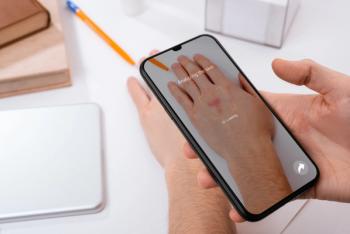
Challenging Cases in Oncodermatology
In her presentation at the recent American Academy of Dermatology (AAD) Annual Meeting, Anisha Patel, MD, FAAD, discusses challenging oncodermatology cases at the MD Anderson Cancer Center, University of Texas Health Science Center.
Skin manifestations and other dermatologic issues are some of the most common complications in cancer patients. Knowing how to distinguish the differences for these conditions in patients who are immunosuppressed is critical.
In a recent session at the American Academy of Dermatology (AAD) Annual Meeting, held March 25-28, in Boston, Massachusetts, experts presented on these distinguishing factors for diagnosis. Anisha Patel, MD, FAAD, associate professor of dermatology at the MD Anderson Cancer Center, University of Texas Health Science Center, in Houston, highlighted cases of oncodermatology and how she came to the correct diagnosis.
The first case that she presented on was a 68-year-old Caucasian male with a history of present illness (HPI) of an acute renal failure requiring hemodialysis and a 3-week history of a painful rash on the bilateral soles and palms.
His past medical history (PMH) included progressive Immunoglobulin G (IgG) lambda multiple myeloma, and chronic kidney disease. Additionally, the exam showed that the patient did not have a fever and was non-toxic appearing.
Patel’s differential diagnosis hypothesized either vaso-occlusive crisis or vasculitis. A vaso-occlusive crisis includes the coagulation disorders disseminated intravascular coagulation (DIC) and thrombotic thrombocytopenic purpura (TTP). It also has cryoglobulinemia type 1, cryofibrinogenemia, and is levamisole induced. Embolic disorders include cholesterol emboli, endocarditis, and atrial myxoma. Vascultitis includes septic vasculitis, autoimmune vasculitis and has cryoglobulinemia type 2 and 3.
The patient’s labs showed:
- White blood cells (WBC) 3.8 K/μL, hemoglobin (Hgb) 8.2 g/dL, Platelet thrombocyte count (plt) 59 K/μL, fibrinogen 575 mg/dL.
- Coagulation panel: Within normal limits (WNL)
- Antinuclear antibody (ANA), antineutrophil autoantibodies (ANCA), hepatitis C antibodies, and viral load were negative.
- Serum cryoglobulins were negative
- The tissue culture was negative for bacteria, acid-fast bacilli, and fungal organisms.
To treat this patient, Patel said he had 4 rounds of total plasma exchange apheresis which improved purpura and pain. He was also treated for type 1 cryoglobulinemia. This targeted treatment of the underlying cause. Additionally, for hypervisosity syndrome treatment, plasma exchange can be used to decrease the burden of circulating cryoglobulins.
Another case that she discussed was a 44-year-old Black male with a 3-week HPI of growing and tender nodules on the chest and back. His PMH included stage 4 anaplatic large-cell lymphoma, CD30 (+) and anaplastic lymphoma kinase (-).
His original skin presentation was a left upper cutaneous lip mass. The patient was treated with 6 cycles of chemotherapy and 3 doses of brentuximab vedotin (BV). He then began developing vitiginous lesions diffusely. Any remaining nodules, located on his left chest and left neck, were biopsied and showed CD30 (+) lymphoproliferative disorder.
Total skin electron beam radiation and BV was administered until disease resolution. However, the patient relapsed 2 months after treatment with involvement of the bone, lungs, and skin (CD30 -). He was matched for an allogeneic stem cell transplant and had 3 additional cycles of chemotherapy but unfortunately passed away.
For additional information about Patel’s presentation or the session as a whole, visit the AAD
Reference:
Choi JN, Kwong B, Nguyen C, Patel Anisha. Caring for the cancer patient: challenging cases from inpatient and outpatient oncodermatology consultative services. Presented at: 2022 American Academy Dermatology Association Annual Meeting; March 25-29, 2022; Boston, MA.
Newsletter
Like what you’re reading? Subscribe to Dermatology Times for weekly updates on therapies, innovations, and real-world practice tips.


















